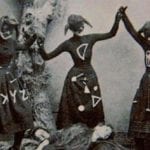 Misconceptions
Misconceptions  Misconceptions
Misconceptions  History
History 10 Amazing Roman Epitaphs
 Weird Stuff
Weird Stuff 10 Niche Subcultures That Are More Popular Than You Might Think
 Mysteries
Mysteries 10 Tragic Disappearances and Deaths in Joshua Tree National Park
 History
History 10 Ways Childhood Really Sucked in the Old West
 Music
Music 10 Name Origins of Famous Bands from the 1990s
 Religion
Religion 10 Biggest Turnarounds by the Catholic Church
 Weird Stuff
Weird Stuff 10 Unbelievable Times Laws Had Unintended Consequences
 Humans
Humans Ten Historic Women Who Deserve Way More Credit Than They Got
 Movies and TV
Movies and TV 10 Films That Spawned Major Lawsuits
 Misconceptions
Misconceptions 10 Phony Myths and Urban Legends That Just Won’t Die
 History
History 10 Amazing Roman Epitaphs
 Weird Stuff
Weird Stuff 10 Niche Subcultures That Are More Popular Than You Might Think
Who's Behind Listverse?

Jamie Frater
Head Editor
Jamie founded Listverse due to an insatiable desire to share fascinating, obscure, and bizarre facts. He has been a guest speaker on numerous national radio and television stations and is a five time published author.
More About Us Mysteries
Mysteries 10 Tragic Disappearances and Deaths in Joshua Tree National Park
 History
History 10 Ways Childhood Really Sucked in the Old West
 Music
Music 10 Name Origins of Famous Bands from the 1990s
 Religion
Religion 10 Biggest Turnarounds by the Catholic Church
 Weird Stuff
Weird Stuff 10 Unbelievable Times Laws Had Unintended Consequences
 Humans
Humans Ten Historic Women Who Deserve Way More Credit Than They Got
 Movies and TV
Movies and TV 10 Films That Spawned Major Lawsuits
Top 10 Misconceptions About Saint Patrick’s Day
Our favorite spring holiday (which technically falls within the calendar confines of winter) is almost here. Whether you call it St. Patty’s Day, St. Paddy’s Day, or St. Patrick’s Day, the festivities on March 17 keep us raising our glasses (and steins and mugs) to the feisty Irish and their pious and humble patron saint.
But let’s closely examine some of the traditions that are associated with this festive holiday and how they got started in the first place. Chances are, a lot of what you thought about Saint Patrick’s Day is wrong. You might turn green with astonishment . . .
10 The Diaspora
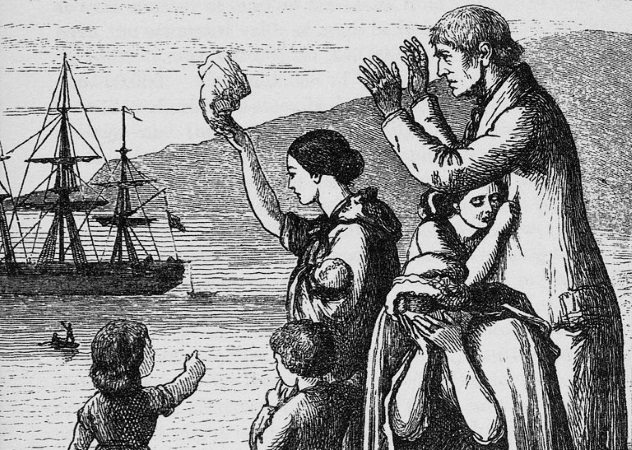
The mass emigration, or diaspora, of the Irish throughout the world in the 19th century during the Potato Famine from 1845 to 1849 spread their gritty, stalwart heritage to distant, foreign shores. Their migration for a better life brought almost two million immigrants to the United States by 1891, and to this day, more than ten percent of the US population has roots stemming back to Ireland. And, of course, these diligent people brought along their customs, their heritage, and the recipes of their foremothers. Perhaps the ultimate gift they brought to the States might be the yearly Saint Patrick’s Day celebration shared by all. But did the celebration as we know it start in Ireland, or did it start with the immigrants themselves?
The first Saint Patrick’s Day parade was held in New York City in 1762, 14 years before the signing of the Declaration of Independence, by homesick Irishmen serving in the British Army. A common misconception is that this jovial homage of heritage was directly transported from Ireland. More correctly, the emigrants, nostalgic for the country they were forced to abandon, brought together various traditions from their homeland and celebrated them in unison on March 17, the day of their patron saint. And as these celebrations became more popular in the United States, and as the parades grew bigger and longer throughout increasingly numerous cities, it was only then that such New World traditions spread back to Ireland.[1]
Before the mass migration to distant shores, Saint Patrick’s Day in Ireland was a simple religious observance with modest festivities due to the fact it fell within the confines of Lent (a time of fasting and austerity), set in an age of volatile church rivalries. In 1996, Ireland officially established the St. Patrick’s Festival, with parades that stem from that original procession held in New York in 1762. The holiday is also celebrated in nations all across the world. Now that’s a lot of corned beef and cabbage . . .
9 The Corned Beef Conundrum
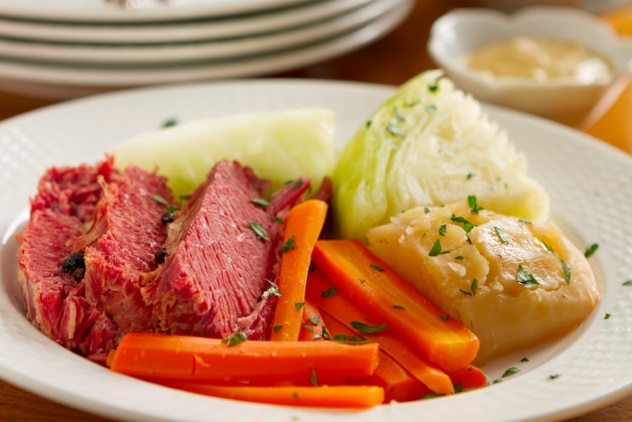
And while we’re on the subject, what’s with this corned beef and cabbage debate? On one hand, you’ve got St. Paddy fanatics who can’t get enough of it each March, and then you’ve got others who roll their eyes as they remind you that the dish isn’t even Irish. Well, which is it?
The claim that corned beef is not Irish is historically inaccurate. During the 17th and 18th centuries, Ireland was the predominant exporter of corned beef in the world due to its surplus of cattle and lower taxes on salt. The ironic part is that back in those days, the average Irishman could not afford beef, salted or otherwise, and while a boiled dinner of cabbage and potato was commonplace, the meat itself would generally be lamb or bacon. No simple farming family with children would slaughter their milk-bearing cow for food consumption, and when the cow grew beyond its milking years and was finally butchered, only the rich could afford to buy the beef. Nineteenth-century Ireland was not a land of rich folk by any means, and when the Great Famine began in 1845, more than one million people emigrated to the United States.
With meat readily available in the US, it didn’t take Irish immigrants long to start boiling corned beef—that cut of meat previously only available for the rich—with their cabbage and potatoes.[2] The corned beef we eat today, however, is of the Jewish brisket variety, rather than the corned, or salted, beef from Ireland’s history, which was cured with large “corns” of crystal salt. So, the debate rages on, both in textbooks and at the local pub. Either way, pass the plate because we’re having seconds.
8 Larcenous Leprechauns

We tend to think of leprechauns once a year (and only once a year), but when we do think of them, we regard them as happy little green-clad chaps, generously offering their pots o’ gold and granting us all St. Paddy’s Day greetings. But don’t you dare go to the Emerald Isle spouting such testimonial.
In Ireland, the leprechaun is traditionally portrayed as a mischievous imp, both in literature and folklore. These sawed-off little miscreants fall within the confines of “evil faerie” to the point where they have been known to haunt basements, drink incessantly, and commit capricious acts of contempt upon one’s grandma. They might technically be faeries, but they’re of no relation to Tinker Bell! It seems the only positive attribute these little creeps have is that they make shoes; unfortunately, the shoes they make are probably all about 8 centimeters (3 in) long.[3]
They’re not exactly the guy from the front of the cereal box, huh? And, if there really is a pot of gold at the end of a rainbow, you can bet a leprechaun probably stole it from somewhere!
7 The Symbolic Shamrock
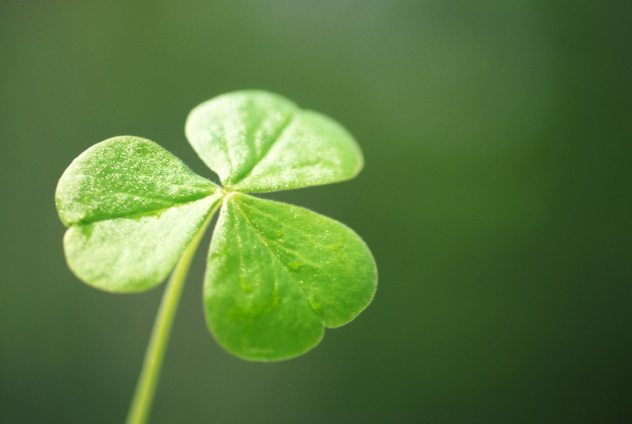
You see a shamrock, you think of Ireland and Saint Patrick’s Day. They’re cute and decorative but are really just simple little pickings from a plant related to the same wild clover you might think of collectively as weeds. But are these tiny, green emblems of Ireland really such tokens of simplicity, or do they actually have a much higher meaning and significance? You might be surprised.
The ancient Celts believed the shamrock, or trefoil, to have mystical properties due to their fascination with the number three. It is also believed that Saint Patrick converted the pagans unto Christianity using the shamrock to represent the Holy Trinity.[4] Additionally, the “wearin’ o’ the green” back in the 18th century was looked upon as nationalist rebellion by the British authorities, sometimes punishable by death. Now that’s a barrel load of symbolism for one little weed!
Also, we often assign a level of luck to the shamrock, especially if it has a fourth leaf. And every time we play cards, we certainly hope for luck, thus perhaps explaining the suit of clubs, from the Dutch klaver—“a club at cards”—or clover at cards. With that fact being established, we hope there’s a four-leaf clover, or shamrock, in every deck you are dealt, especially if you’re gambling in Ireland!
6 Wearin’ O’ The Orange?
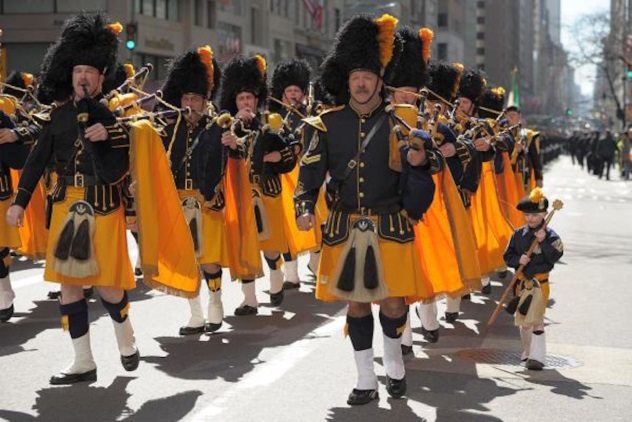
And the shamrock isn’t the only thing green at your local St. Patty’s parade. Everything is green at your local St. Patty’s parade—and in every parade all over the world. Well, with the exception of one country, that is, and it is Northern Ireland, of all places.
The color orange has represented Northern Ireland and, by extension, Protestantism for centuries, dating back to William of Orange’s victory over King James II in 1688.[5] The “Orangemen,” as they call themselves, march both in honor of their Irish heritage and in protest of the Catholic influence presiding over the holiday. But in recent years, green and orange are mixing well over in the upper half of the Isle of Erin, as the Northern Irish are increasingly welcoming back the concept of Saint Patrick into their patriotic parade.
But orange leprechauns might be going a bit too far!
5 That’s Bishop Patrick, Thank You
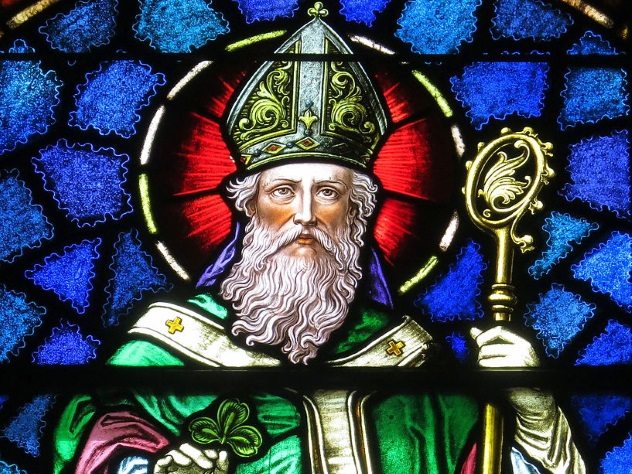
Saint Patrick is not only the patron saint of Ireland and the inspiration for the worldwide celebration each March, but he is also one of the most memorable and popular of all saints. There are St. Patrick’s Cathedral in New York City and the city of St. Patrick, Missouri, and hundreds of parades are held around the United States each and every year in his name.
But did you know the guy isn’t really a saint? He was never actually canonized by the Roman Catholic Church.[6] He is believed to have been born in Scotland or Wales (claims vary), as opposed to Ireland, in AD 375, and his real name was Maewyn Succat. He was never formally granted sainthood due to the fact there was no canonization process in that early era of the Church. At the time, the term “saint” was mostly honorific and unofficial and was for the most part given to battlefield martyrs.
It seems his actual church designation was “bishop,” and he even had assistant bishops, but in the hearts of millions of people across the world, he has been canonized ten times over!
4 But What About The Snakes?

It happens every St. Patty’s: Someone will raise their glass and offer a toast to the saint who drove the snakes out of Ireland. Then someone else will put down their stein and remind the first guy that there never were any snakes in Ireland to drive out in the first place. But are either of these two statements accurate?
According to science, snakes have never existed in Ireland due to its isolation from both the mainland and from England. Although the Brits managed to acquire three species of snakes through a prehistoric land bridge with continental Europe, a similar land bridge between England and Ireland had been overtaken by the sea 2,000 years beforehand.[7] So, if there were no snakes to cast out, who or what did Saint Patrick give the boot to? Could this old legend possibly be referring to his removal of the pagans?
Many scholars believe that his casting out of serpents is allegorical to his removal of the Celts and druid priests, most of whom held the snake as their main mystical symbol. (To heck with the shamrock.) And St. Patrick was very diligent about the elimination of all pagans and their line of worship—including their serpents.
And as for no snakes in the Emerald Isle, tell that to the serpentine slowworms (or slow worms) of the Burren National Park. Slowworms are actually legless reptiles that were probably introduced into the area in the 1970s, and they are thriving despite St. Patrick’s admonishment to the contrary. Admittedly, they are officially lizards, yet they look, live, and slither like snakes to the point that not even St. Paddy, nor your Aunt Meghan, could tell the difference. Of course, adding to the confusion is the fact they are called worms. As the Irish say: That’s a fret!
3 Parades Or Politics?
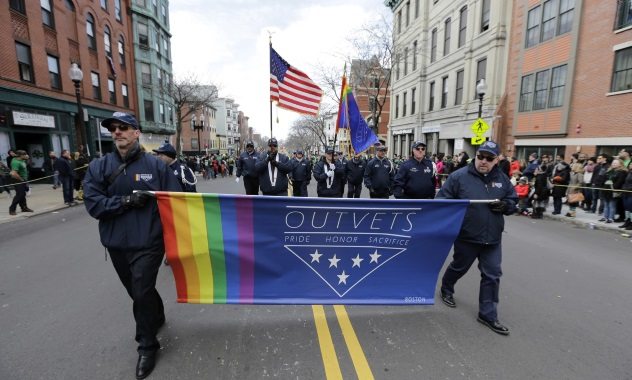
We all love a festive St. Paddy’s parade, and there are hundreds of them across the world each March, hence the saying “Everyone is Irish on St. Patrick’s Day.” It is a procession of pride, heritage, and joviality. But does everyone really feel included?
One of the main complications for parade organizers around the United States is when groups with opposing or controversial views petition to march. This habitually happens when gay and lesbian activists apply for entry into a specific parade, and often, the debates and mudslinging that follow can become even more controversial than the application itself! In Boston, a group of LGBT veterans going by the name of OutVets repeatedly applied to officially participate in the celebration for over 20 years before approval was finally granted in 2015, but two short years later, the Allied War veterans, the official parade organizers, once again denied their entry. The mayor of Boston, Martin J. Walsh; the governor of Massachusetts, Charlie Baker; and Senator Edward Markey, among other legislators, threatened to boycott the parade if OutVets were excluded. By a resentful Allied vote, the OutVets were once again allowed to march, and they proudly did so.[8]
And now in 2018, back in the Emerald Isle, they’re starting to argue, ban, and boycott once again over the concept of colors and flags. Come on, haters, don’t rain on our parade . . .
2 ‘I’ll Have A Guinness With A Jameson Black’
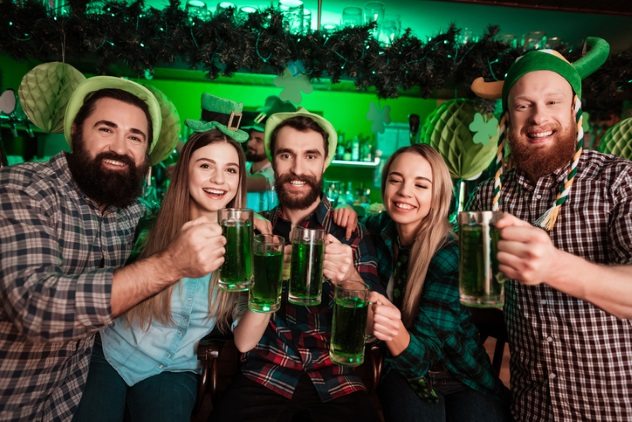
St. Patty’s Day in the US is associated with pubs, taverns, barrooms, and . . . oh yes—the parades. But truthfully, in the United States, March 17 is one of the more drunken, ribald, and celebratory of all the festive holidays. And Americans have the ultimate excuse: Everyone’s Irish on St. Patty’s, and the Irish always get drunk on this day! But is that actually true?
Ireland is a traditionally Catholic nation, and the holiday of their patron saint falls within the Lenten season, two religious factors which practically mandate sober and humble behavior. As a matter of fact, right up until the 1970s, pubs were closed on this day of honor to ensure a respectful observance. But in the 1990s, the government cancelled that restriction to encourage tourism, and since then, the Irish have been catching up with the Americans in terms of revelry.[9]
And since so many of the tourists are from the US anyhow, let’s go back to blaming it on the Yanks!
1 Who’s Up For An Irish Coffee Shamrock Shake?
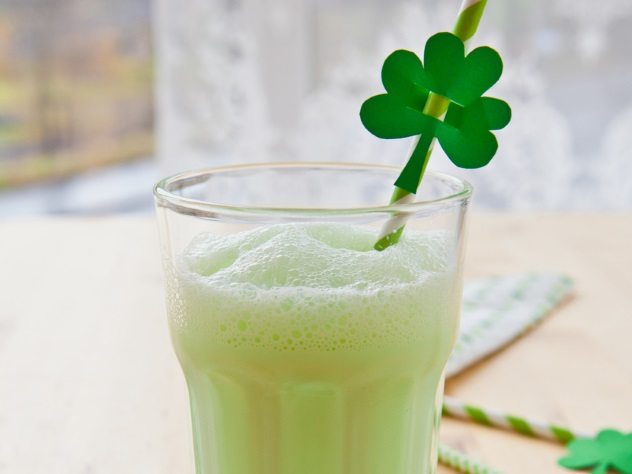
And it’s that time of year again for shamrock shakes and chocolate mint sundaes. While McDonald’s may have been the forerunner with green milkshakes since 1970, since then, those Golden Arches have inspired a myriad of St. Patty–esque confections that come in all shapes and sizes. And these minty, ice-creamy desserts are everywhere in the first half of March—at burger joints, pizza chains, and waffle houses. Ironically, these types of treats aren’t quite as popular in Ireland as they are across the Atlantic, so if you’d like to enjoy some real Irish desserts this year, there is one ingredient to make sure you have available in your kitchen: whiskey.
For some reason, the Irish have a lot of dessert recipes steeped in whiskey, which, of course, burns off and lingers in flavor only. From Irish whiskey cake to whiskey buttermilk pie to bread pudding with Irish whiskey sauce, you will love each spoonful—and with neither the buzz nor the hangover! Actually, it seems the Irish have a grand tradition of cooking just about any meal with spirits.[10]
Hey, how about Irish whiskey in our shamrock shakes this year, huh? Oh well, maybe next year . . .
.
Read more facts about your favorite holidays on 10 Things You Didn’t Know About The History Of Halloween and 10 Misconceptions About Christmas That Get Repeated Every Year.


